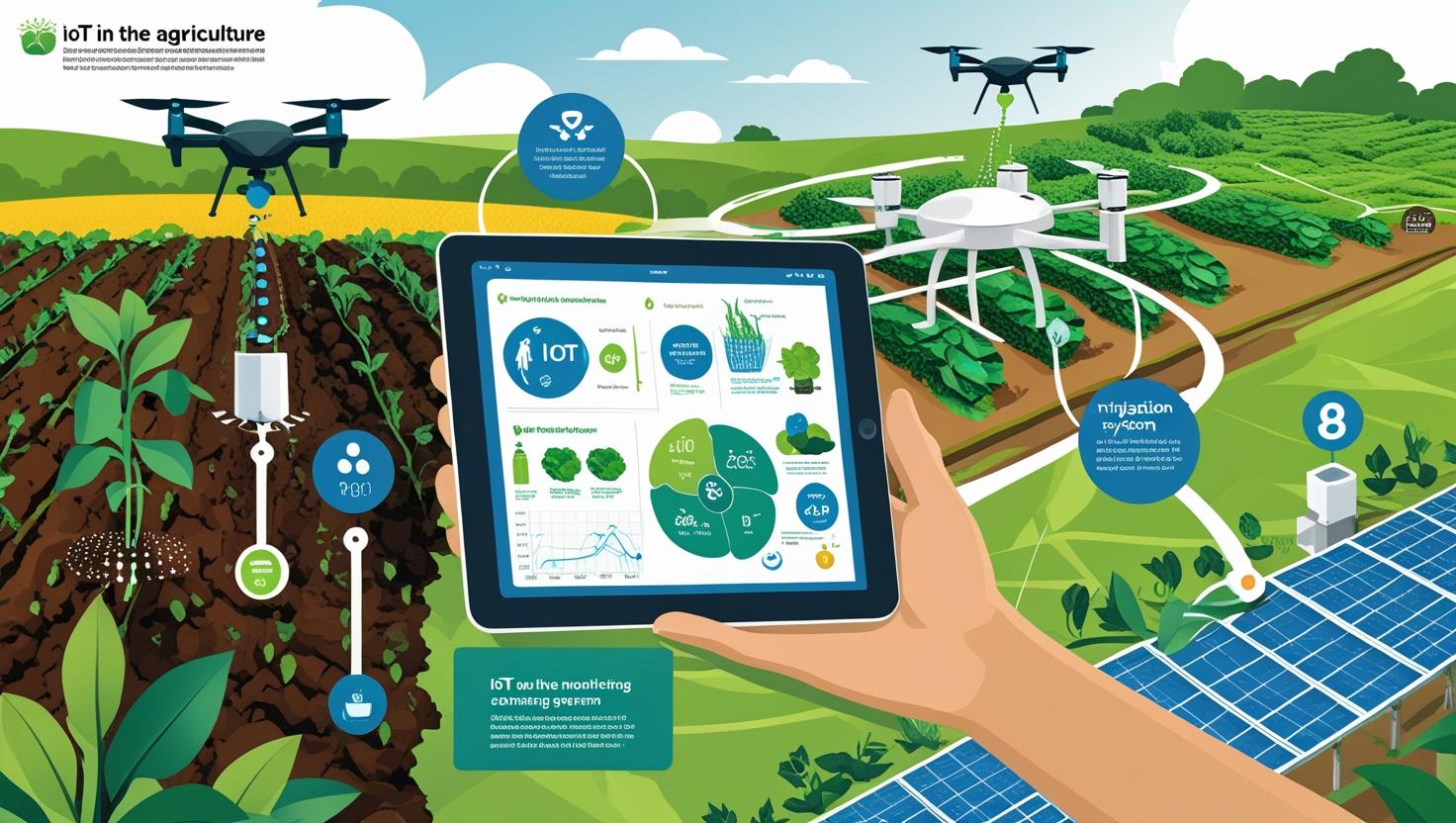The Internet of Things (IoT) is revolutionizing nearly every industry, and agriculture is no exception. As global demand for food continues to rise and climate change introduces new challenges, farmers are increasingly turning to IoT technologies to improve productivity, efficiency, and sustainability. From precision farming to automated irrigation, IoT is transforming traditional agricultural practices into data-driven, intelligent systems capable of making informed decisions in real-time.
One of the most significant ways IoT is transforming agriculture is through precision farming. By leveraging IoT-enabled devices such as soil sensors, weather stations, and GPS-equipped tractors, farmers can monitor and manage crops with pinpoint accuracy. These sensors collect critical data on soil moisture, temperature, pH levels, and nutrient content, allowing farmers to tailor their inputs—like water, fertilizer, and pesticides—according to the exact needs of specific sections of their fields. This not only improves crop yields but also reduces waste and minimizes environmental impact.
Download PDF Brochure @ https://www.marketsandmarkets.com/pdfdownloadNew.asp?id=239736790

IoT also plays a pivotal role in automating irrigation systems, which is especially important in regions facing water scarcity. Smart irrigation systems equipped with IoT sensors can detect soil moisture levels and weather forecasts in real time to adjust watering schedules automatically. This ensures that crops receive the right amount of water at the right time, improving water use efficiency and promoting healthy plant growth. As a result, farmers can reduce water consumption significantly while maintaining or even increasing agricultural output.
Livestock management is another area where IoT is making a profound impact. Farmers can now use wearable IoT devices and sensors to monitor the health, location, and activity levels of individual animals. These devices track vital signs, detect signs of illness or stress, and send alerts to farmers when intervention is needed. This real-time monitoring helps improve animal welfare, enhances productivity, and reduces the risk of disease outbreaks, all of which contribute to a more sustainable and profitable livestock operation.
Supply chain optimization is also benefiting from IoT in agriculture. With the help of smart tags, RFID sensors, and real-time GPS tracking, agricultural producers can monitor the location and condition of their products throughout the entire supply chain. This transparency ensures food safety, reduces spoilage, and improves logistics efficiency. Moreover, consumers and retailers gain greater confidence in the origin and quality of the food they purchase, further enhancing trust in the agricultural value chain.
Drone technology, integrated with IoT, is becoming an increasingly valuable tool for modern farmers. Drones equipped with cameras and sensors can fly over fields to capture high-resolution images and data related to crop health, pest infestation, and soil variation. This aerial data, when combined with IoT-based analytics platforms, enables farmers to make timely and accurate decisions, such as where to apply treatments or how to replant certain areas, thereby improving overall field productivity.
Furthermore, IoT is playing a critical role in greenhouse automation. Smart greenhouses utilize IoT sensors to continuously monitor internal conditions such as temperature, humidity, light levels, and CO₂ concentration. Based on real-time data, these systems can automatically adjust lighting, ventilation, and irrigation systems to create the ideal environment for plant growth. This level of automation reduces the need for manual intervention and enables year-round crop production with optimal resource use.
The adoption of IoT in agriculture is also driving the development of powerful analytics and farm management platforms. These platforms integrate data from various sources—weather forecasts, sensor data, equipment performance, and market prices—to provide farmers with actionable insights and predictive analytics. By using these tools, farmers can plan more efficiently, manage risks better, and make data-driven decisions that enhance productivity and profitability.
As connectivity improves and sensor costs decline, IoT adoption in agriculture is expected to accelerate even further in the coming years. Governments, agritech companies, and research institutions are investing in digital agriculture initiatives, providing farmers with access to training, tools, and infrastructure to support this transition. While challenges such as data privacy, connectivity in rural areas, and interoperability remain, the potential of IoT to transform the future of farming is undeniable.
See Related Semiconductor Reports:
Precision Farming Market by Automation & Control Systems, Cloud-based Software, System Integration & Consulting Services, Guidance Technology, Variable Rate Technology, Yield Monitoring, Field Mapping, Variable Rate Application – Global Forecast to 2032
Vertical Farming Market by Growth Mechanism (Hydroponics, Aeroponics, Aquaponics), Structure (Building-based and Shipping container-based), Crop Type, Offering (Hardware, Software, Services) & Region – Global Forecast to 2029
